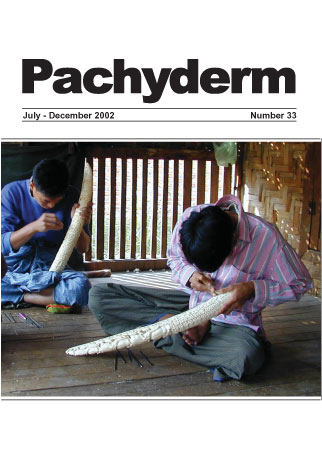Community-based methods to reduce crop loss to elephants: experiments in the communal lands of Zimbabwe
Abstract
This study compared an experimental community based strategy for protecting crops with current deterrent methods involved 7 villages in a high elephant population area in Guruve District in northern Zimbabwe. The experimental deterrents included warning systems, barriers and active deterrents and were designed to increase the capacity of the farmers to detect and repel elephants. Presently used methods of deterrence of raiding elephants problematic, traditional deterrents used by rural farmers become ineffective over time 'and interventions by NGOs or wildlife authorities tend to be expensive and unsuitable in remote locations'. Individual experimental methods were more effective at deterring elephants than current traditional methods and the 'integrated strategy' which combined two or more of the deterrent significatnly reduced the total crop damage in the study villages. Results suggest elephants can be deterred from crop raiding using relatively inexpensive materials that are locally available and that local communities can administer: buffer zones, watchtowers, fire, alarms and noise makers ( drums, firecrakers, cow bells) burning chilli pepper and dung bricks, rocks and other thrown objects.
Downloads
Published
How to Cite
Issue
Section
License
Copyright (c) 2002 Ferrel V. Osborn, Guy E. Parker

This work is licensed under a Creative Commons Attribution-NonCommercial 4.0 International License.




